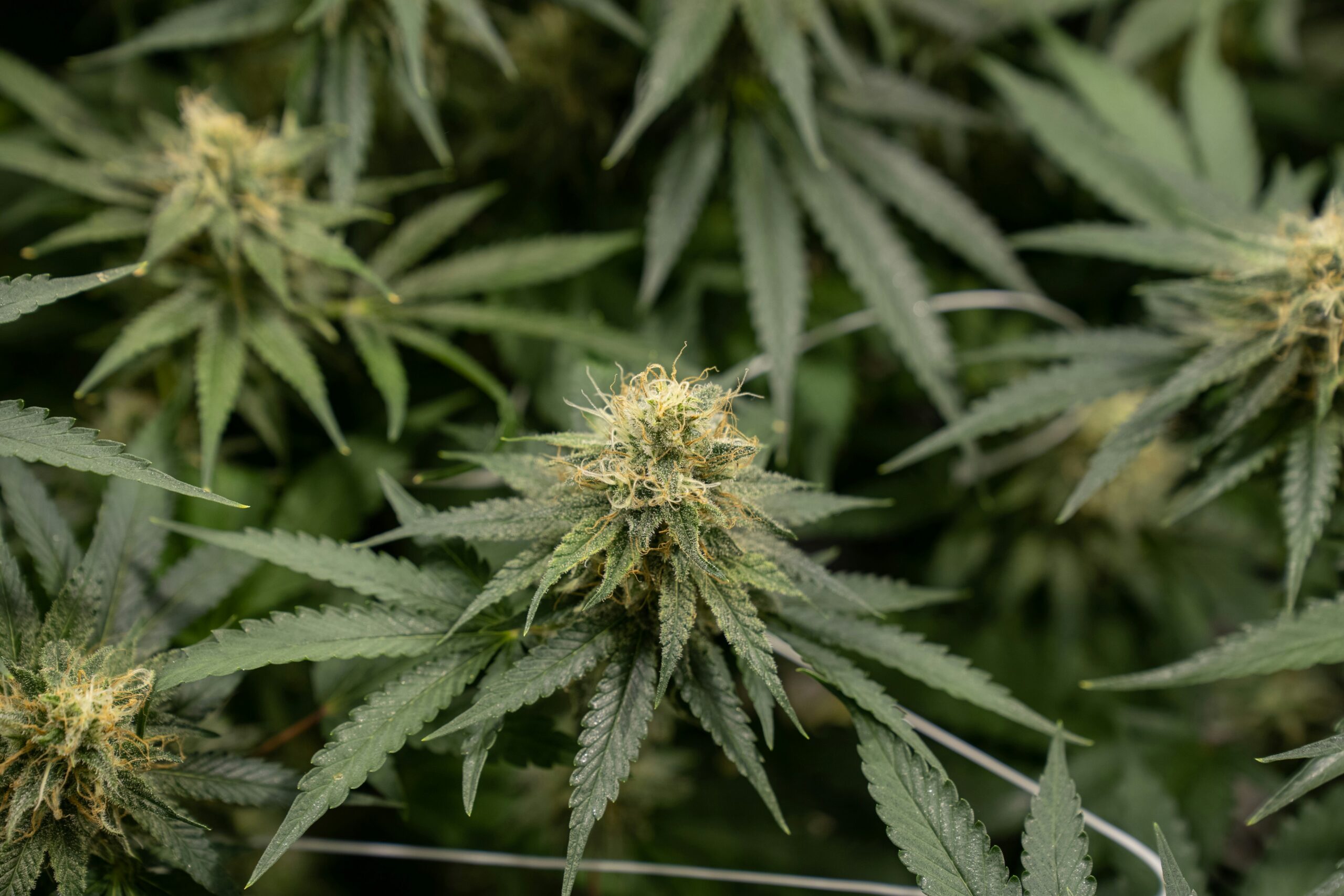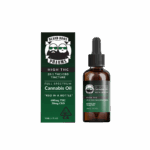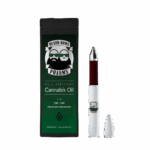Cannabis is much more than just a green, herbaceous plant; it’s a symbol of diverse history, and therapeutic medicine, with an influential industry across the globe.
From historical uses in ancient rituals to its modern applications in both medicinal and recreational legal markets, the cannabis plant has proven itself to be a versatile and invaluable resource. Learn the ins and outs of a cannabis plant to truly appreciate its full potential.
What is a Cannabis Plant?
The cannabis plant is a flowering species that belongs to the Cannabaceae family. The plant is generally identified for its tall appearance, herbaceous aroma, and serrated, edgy leaves. Although this plant looks green and lush like most other plants, what makes this species complex is the compounds and cannabinoids that are composed of it.
When cannabis is grown and processed for consumption, it provides diverse, unique effects that have a profound influence on the human body. It is why this plant has been used in ancient medicine and spiritual rituals for centuries. The historical significance of cannabis plants stems back long before the modern-day legalization movement. Tracing back as far as 2800 BC, cannabis has been an instrumental resource in aiding various diseases, symptoms, and spiritual ailments.
In today’s world of cannabis plant cultivation, two types of cannabis are grown for their outstanding effects and therapeutic properties:
- Marijuana: Otherwise known as cannabis, this plant type is cultivated for its psychoactive and medicinal properties. Most marijuana or cannabis plants are high in tetrahydrocannabinol (THC), the compound responsible for intoxicating effects that influence the body and mind.
- Hemp: This species is also part of the Cannabaceae family. Hemp has relatively lower levels of psychoactive cannabinoids like THC, testing out at less than 0.3% THC in most regions. This makes hemp ideal for industrial manufacturing for additional resources (such as seeds, oils, fibers, or various CBD products).
Currently, one key difference between marijuana and hemp is its federal legal status within the United States. According to the 2018 U.S. Farm Bill, hemp grown and tested to be under 0.3% THC is fully legal to grow, possess, and consume. However, the federal legalization of marijuana is still hazy.
- The cannabis plant is positioned as a Schedule 1 substance by the DEA (where LSD and heroin are ranked), with talks of it rescheduling to Schedule 3 (with substances like ketamine).
- Nationwide research and clinical information about cannabis plants is not as widespread due to this federal scheduling. Individual states within the U.S. that are recognizing the research circulating the cannabis plant are moving towards the plant’s legalization.
Types of Cannabis Plants
Cannabis is a genus of plants from the Cannabaceae family. Technically, there are three identified species of cannabis plants:
- Cannabis Sativa: This was the species first identified by biologist Carl Linnaeus in 1753, (which is why this species is often known as Cannabis Sativa L). Cannabis sativa plants are known to be lengthy in appearance, with thin, serrated leaves. These cannabis plants grow fast and thrive in various climates, but cannabis sativa was first discovered as being indigenous to Eastern Asia.
- Cannabis Indica: This cannabis plant type is similar to Cannabis Sativa, but the plant’s appearance may grow short and stout. Cannabis indica leaves tend to be a bit shorter and wider, and compared to Sativa, so is the length of Indica’s growth cycle. While cannabis indica can grow in various climate ranges, it thrives best in cooler, dryer environments. Originally, cannabis indica was native to regions of Afghanistan and India.
- Cannabis Ruderalis: Encompassing all similar traits to indica and sativa plants, the main difference with Cannabis Ruderalis is autoflowering and its smaller appearance. This cannabis plant type ages based on age and time, rather than light cycles. Cannabis ruderalis may have lower levels of THC and other cannabinoids. A completed growth cycle can be achieved within 5-7 weeks, making it ideal for cannabis cultivation in regions with shorter growing seasons.
What are the Parts of the Cannabis Plant?
The first and arguably most important detail of cannabis that we all know and love is that the cannabis plant is female. While all plants in the cannabis species can be either male or female, it’s female cannabis plants that flower and produce the sticky, potent flower that can be smoked or consumed. Aside from the sex of cannabis plants, both male and female cannabis share some similar plant parts:
Roots
The cannabis plant roots are the lifeline and foundation of the plant, connected firmly to the soil and providing essential support throughout the plant cycle.
The roots of cannabis plants play a crucial role in their overall health and development. They absorb essential nutrients, including nitrogen, phosphorus, and potassium – all are vital for robust growth, strong stems, and high yields. Additionally, the roots of cannabis plants interact with beneficial microorganisms in the soil or growing medium, enhancing nutrient uptake and strengthening the plant’s immunity.
A well-developed root system is also important to provide stability for cannabis, helping the plant withstand environmental stresses such as wind and heavy rainfall.
Cannabis Stem and Branches
The stem and branches of cannabis plants essentially provide the framework and structure of the plant. As the plant growth cycle progresses, you’ll notice leaves and branches of cannabis extending to greater heights and lengths. The stem of a cannabis plant also acts as a highway for the plant, connecting the root base to other parts of the plant.
- This is particularly important during the plant’s photosynthesis process when sugars are produced and distributed throughout the plant to fuel growth and flower production.
- Nodes on a cannabis plant are identified as the intersections where branches connect with the plant’s main stem.
Healthy stems and branches on cannabis plants make for an overall strong and sturdy plant, which can be beneficial if cultivating outdoors where environmental stressors can occur.
Cannabis Leaves
Famous for their appearance, cannabis leaves also have a great responsibility to the overall plant cycle. Cannabis leaves are the key players of light absorption for the cannabis plant.
- The leaves encompass chlorophyll, a green pigment that converts sunlight into energy in the plant’s photosynthesis process.
- Stomata are tiny pores on cannabis leaves that open and close depending on the plant’s hydration.
If you’re ever curious about the health of your cannabis plant, monitoring and assessing the leaves is a good way to notice any symptoms or signs.
- Yellowing leaves can signal cannabis nutrient deficiencies, and darker or droopy leaves may be signs of nutrient burn (an abundance of nutrients).
Cannabis Flowers & Stamens
If a cannabis plant is male, it will not have any flowers, but a stamen.
- These are pollen sacs shaped like tiny green eggs, about the size of pollen grains, that blossom between the nodes and branches of the plant.
- Once this plant has matured, these pollen sacs will be released into the air to pollinate with nearby female cannabis plants.
If a cannabis plant is female, you’ll begin to notice buds or flowers popping at the top of the plant. The female reproductive parts of cannabis plants are:
- Pistils are oval structures that are encapsulated by bracts, which protect the seed pod of the plant.
- The hair-like structures growing at the tip of the cannabis plant’s flowering bud are called the stigma. A female cannabis plant is pollinated when the male’s pollen lands on the stigma and pistils of the other plant.
Identifying Compounds & Cannabinoids in Cannabis Plants
If you believe the appearance and physical characteristics of cannabis plants are complex – so are the thousands of compounds that are composed of it!
Cannabinoids are the organic compounds found in cannabis. Research has identified over 100 different cannabinoids present in the cannabis plant, (with over 400 different compounds discovered overall). Some of the most common cannabinoids in cannabis plants include:
- CBD (cannabidiol)
- THC (tetrahydrocannabinol)
- CBN (cannabinol)
- CBG (cannabigerol)
- CBC (cannabichromene)
- And much more
When cannabis is consumed or smoked, cannabinoids each exert a specific effect by interacting with the endocannabinoids in our body. Each cannabinoid holds a certain chemical effect that may differ depending on the other cannabinoids present. When consumed, it interacts with our Endocannabinoid System to induce unique effects and influences on the body.
However, cannabinoids aren’t the only compounds in cannabis plants that affect the body and mind when consumed. Terpenes are botanical compounds, found in most plants, that offer a wide variation of influential effects. Major terpenes found in cannabis plants include:
- Myrcene
- Beta-Caryophyllene
- Linalool
- Limonene
- Pinene
- Terpinolene
- Ocimene
- Humulene
Like cannabinoids in cannabis plants, each terpene carries a significant aromatic profile that offers unique effects to consumers. When combined with the other cannabinoids and compounds in cannabis, a full-spectrum experience is formed. This phenomenon is known as the entourage effect – when a unique combination of terpenes and cannabinoids creates harmonic effects for consumers.




















